Be the first to review this product
In stock
SKU
CR287AF
PRODUCT DETAILS
Mokum carrot seeds are back by popular demand! The finest flavour and so crisp and delicate that it actually has to be hand dug, not just pulled out by the tops. You can enjoy these as baby carrots (they colour up quickly) or longer at 15-20 cm (6-8""). These deep orange carrots are high in Vitamin A and sugars. Mokum is an Amsterdam type - an imperator with blunt (as opposed to pointed) ends. Be sure to plant this variety in soil that has been deeply cultivated. Use a garden fork to break up all dirt clods and remove all stones. And thinning carrots is critical if you want them to grow straight and unblemished.
Matures in 60 days. (Hybrid seeds)
- Fine, crisp, and delicate
- Baby carrots or longer
- High in Vitamin A
- Hybrid seeds
- Matures in 60 days
All About Mokum
Carrot Shapes
Carrot Chart
We Recommend
Bolero (CR283). It’s not really fair to recommend one carrot over another because they are all so different and appealing in their own ways. But for simple ease of planting Bolero carrot seeds can’t be beat.Season & Zone
Season: Cool season. Exposure: Full-sunTiming
Direct sow from just after the last frost date to late summer for harvests from summer through early winter. Sow at 3 week intervals for a continuous harvest. Direct sow winter-harvest carrots (where winters are mild) in the first two weeks of August. Optimal soil temperature: 7-30°C (45-85°F). Seeds may take as long as 14-21 days to germinate.Starting
Because carrot seeds are tiny, they need to be sown shallowly. The trick is to keep the top-most layer of soil damp during the relatively long germination period. Water deeply prior to planting. Direct sow the tiny seeds 5mm (¼”) deep, 4 seeds per 2cm (1″), and firm soil lightly after seeding. Make sure the seeds are only just buried. Water the area with the gentlest stream possible, and keep it constantly moist until the seeds sprout.Days to Maturity
From direct sowing.Growing
Ideal pH: 6.0-6.8. The softer and more humus-based the soil, the better. When soil is dry enough in spring, work it to a fine texture. Broadcast and dig in ½ cup complete organic fertilizer for every 3m (10′) of row. Avoid fresh manure. Carrots will become misshapen, but still edible if they hit anything hard as they grow down into the soil. Keep weeded and watered.Thinning
This is the process of removing some seedlings, if necessary, so each has enough space to grow in the row. It is very important to thin carrots so they don’t compete for available nutrients, moisture, and light. Thin to 4-10cm (1½-4″) apart when the young plants are 2cm (1″) tall. Use wider spacing to get larger roots. As they grow, carrots may push up, out of the soil, so hill soil up to prevent getting a green shoulder.Harvest
Carrots can be harvested at any size, but flavour is best when the carrot has turned bright orange - or its other mature colour. After harvest, store at cold temperatures just above 0ºC. Store in sand or sawdust, or simply leave carrots under heaped soil in the garden during the winter, and pull as needed.Seed Info
In optimal conditions at least 60% of seeds will germinate. Usual seed life: 3 years. Per 100′ row: 2.4M seeds, per acre: 1,044M seeds. Rates are for raw, not pelleted seeds.Diseases & Pests
- The Carrot Rust Fly – This pest lays its eggs at the base of the growing carrots. The larva of the fly chews tunnels and unsightly grooves through the surface of the root, causing rot. Unfortunately the damage isn’t just cosmetic; the activities of the Carrot Rust Fly larva changes the flavour of the carrot and makes it quite inedible. Use our floating row cover to keep the adults away from the carrots. Plant after the beginning of June to avoid the first and worst infestation period. The good news for apartment dwellers who want to grow carrots on their balconies is the Carrot Rust Fly is not a good flyer. It is unlikely to infest their high-rise crop.
- Wireworm – These are the larva of click beetles. They are about an inch and a half long, slender and reddish brown. When squeezed they turn as rigid as a wire, hence the name. Wireworms chew irregular holes through roots, making the carrots inedible. Wireworms prefer a moist soil so preparing your carrot bed so that it is well drained will help. Interplanting with mustard leaf is an excellent way to discourage wireworm damage. The flavour of the mustard is one deterrent, and mustard also helps to dry out the soil, forcing the wireworm away from the roots.
- Predatory nematodes are an effective control for both Carrot Rust Fly and wireworm. Apply generously in the spring when the larva of both pests is most active.
Companion Planting
Plant with bean seeds, Brassicas, chives, leeks, lettuce, onions, peas, peppers, pole beans, radish, rosemary, sage, and tomatoes. Avoid planting with dill, parsnips, and potatoes. Carrots planted near tomatoes may have stunted roots, but will have exceptional flavour. Chives also benefit carrots.
| Manufacturer's Model Number | CR287AF |
|---|---|
| UPC | 687704070821 |
| Brand | West Coast Seeds |
| Family | Carrots |
| Group | Nantes |
| Days to Maturity | 60 |
| Certified Organic | No |
| Heirloom | No |
| Open Pollinated | No |
| Hybrid | Yes |
| Shipping Type | Seeds |
Customer Questions
Customer Reviews




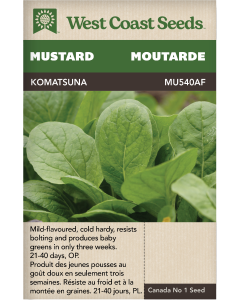
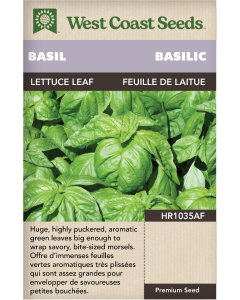
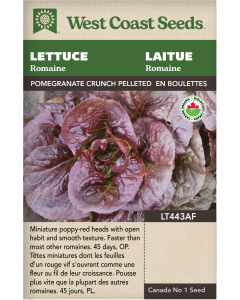
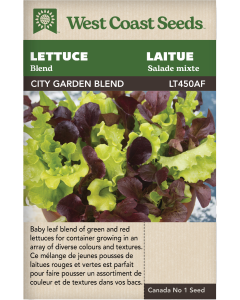
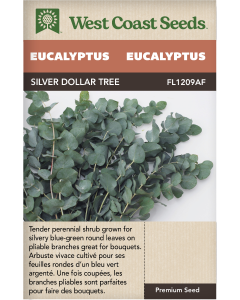

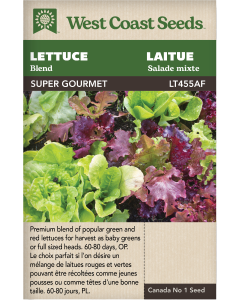

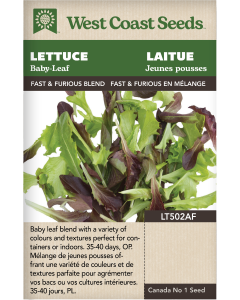
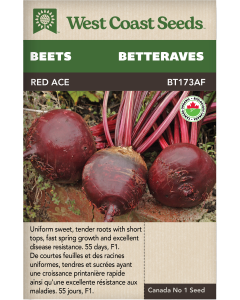
Login and Registration Form